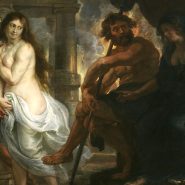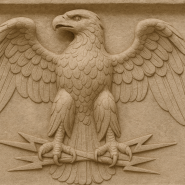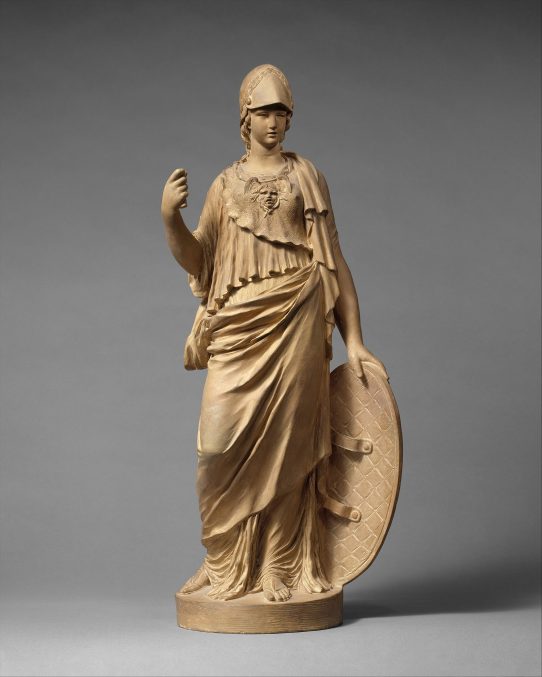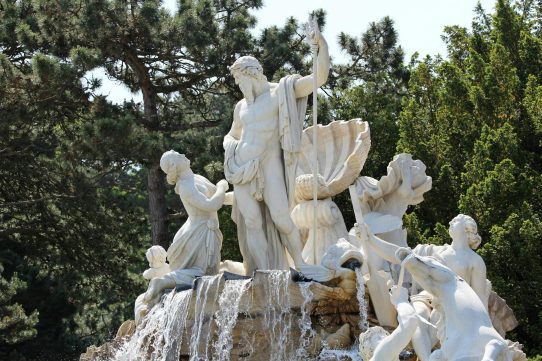Juno, majestic queen of the gods and consort of Jupiter, stood as one of the most powerful and revered deities in Roman mythology. She personified womanhood, marriage, and the sanctity of family, while also serving as a fierce protector of the Roman state.
To the Romans, Juno was not merely the goddess of wives and mothers, but the embodiment of dignity, loyalty, and divine sovereignty. She was both nurturing and formidable — guardian of birth and fertility, yet also a warrior and counselor of kings.
In her radiant strength, Juno represented the Roman ideal of womanly virtue combined with regal authority, the divine balance of compassion and command.
Name and Origin
The name “Juno” is thought to derive from the root iuven-, meaning “youth” or “vital force,” reflecting her connection to vitality and renewal. As one of the oldest Italic deities, she predated Greek influence, though she was later identified with Hera. Yet Juno remained distinctly Roman in spirit — practical, moral, and deeply tied to civic identity.
She was worshipped not only as the divine wife of Jupiter, but also as an independent power in her own right. Her triple aspects — Juno Lucina (protector of childbirth), Juno Moneta (guardian of wealth and warning), and Juno Regina (queen of the gods) — reflected her vast influence over every stage of life and every domain of Roman society.
Attributes and Symbols
Juno was portrayed as a noble and commanding goddess, often crowned with a diadem and draped in flowing robes of regal white and blue.
She held a scepter or a pomegranate, symbols of sovereignty and fertility. Her sacred animals were the peacock, whose jeweled feathers represented her all-seeing majesty, and the cow, a traditional emblem of motherhood. The iris and lily were flowers devoted to her, signifying purity and renewal.
In art, she appeared serene yet proud, her expression a blend of wisdom and resolve — the image of divine authority tempered by grace. Her presence signified protection, order, and the sacred harmony of marriage and governance.
Family and Relationships
Juno was the daughter of Saturn and Ops, and sister to Jupiter, Neptune, Pluto, Ceres, and Vesta.
She became the wife and queen of Jupiter, sharing his rule over heaven and earth. Their union symbolized the divine partnership of power and creation, though it was marked by conflict and passion. Jupiter’s infidelities often provoked Juno’s wrath, and myths tell of her fierce jealousy toward his lovers and offspring. Yet beneath the storms of divine rivalry lay enduring loyalty — their marriage, though tumultuous, represented the cosmic order itself.
Juno’s children included Mars, god of war, whom she conceived without Jupiter’s aid by touching a magical flower, and Vulcan, god of fire and craftsmanship. Her maternal and regal nature intertwined, making her both guardian of women and sovereign of gods.
Myths and Stories
Juno’s myths reveal her strength, pride, and complexity. In one tale, she joined the goddess Minerva and the god Neptune in a rebellion against Jupiter, binding him in his sleep. Yet when the sea nymph Thetis summoned the hundred-handed giant Briareus to free the king of gods, Juno repented and was forgiven. The story illustrated both her fierce independence and her capacity for reconciliation.
In another legend, she sought vengeance against the mortal woman Io, one of Jupiter’s lovers, transforming her into a cow and setting the hundred-eyed Argus to guard her. When Mercury slew Argus, Juno honored his loyalty by placing his eyes upon the peacock’s feathers — turning sorrow into splendor.
Juno also played a crucial role in Rome’s founding myths. As the goddess of Carthage, she opposed the destiny of Aeneas, the Trojan hero fated to establish Rome, out of jealousy and pride. Her enmity set the stage for the long struggle between Rome and Carthage, yet in the end, even Juno accepted fate, granting the Trojans their divine right to rule. This act of submission to destiny reflected her wisdom as queen — pride yielding to cosmic order.
Through her stories, Juno emerged not as a goddess of weakness or vengeance, but as one of transformation: her fury giving birth to justice, her pride to wisdom, her rivalry to renewal.
Domains and Powers
Juno ruled over marriage, childbirth, womanhood, and the protection of the Roman state.
As Juno Lucina, she presided over the moment of birth, bringing light to newborn life.
As Juno Moneta, she guarded Rome’s treasury and served as the divine voice of warning and foresight — the word “money” itself derives from her temple on the Capitoline Hill.
As Juno Regina, she reigned beside Jupiter as queen of heaven, sharing in his authority and counsel. Her divine power extended beyond the home to the empire itself, ensuring harmony between public and private virtue.
She was invoked by soldiers before battle, by brides before marriage, and by the state before every new venture.
Philosophy and Moral Influence
Roman thinkers saw in Juno the embodiment of feminine strength and divine reason. She symbolized the harmony of intellect and emotion, justice and compassion.
Her loyalty to Jupiter, though tested, represented steadfast duty to cosmic law, while her independence reflected the Roman respect for virtue and self-respect. Stoic philosophers regarded her as the divine counterpart to Jupiter’s rational order — the wisdom that governs creation through care rather than force.
To honor Juno was to honor balance: between love and power, freedom and devotion. She reminded Romans that true authority arises not from dominance but from dignity.
Temples and Worship
Juno’s worship was among the oldest in Rome. Her temple on the Capitoline Hill, shared with Jupiter and Minerva, formed the Capitoline Triad — the spiritual heart of the Roman state.
Another great sanctuary, the Temple of Juno Moneta, stood near the Roman mint, where her divine protection was invoked over the empire’s wealth.
As Juno Regina, she was venerated in temples across Italy, especially at Veii, whose statue of the goddess was ceremoniously brought to Rome after its conquest.
Her principal festival, the Matronalia, celebrated on the first of March, honored women, marriage, and childbirth. On that day, husbands gave gifts to their wives, and masters to their female servants, in gratitude for their faithfulness and labor.
Her worship united family and state under her maternal care, reinforcing Rome’s moral and social foundations.
Legacy and Cultural Influence
Juno’s influence endured long after the fall of Rome. She became the archetype of the noble matron and the divine queen, her image shaping later conceptions of regal femininity.
Renaissance artists and poets revived her as a symbol of majesty and wisdom, often depicting her with peacocks and a golden crown. In language, the word “June” — the month dedicated to her — remains associated with weddings and renewal, reflecting her enduring connection to love and union.
Through centuries of change, Juno’s name continued to signify protection, virtue, and power balanced by compassion. She was the eternal guardian of Rome’s heart — its women, its families, and its destiny.
Unique Traditions and Notes
Roman brides offered sacrifices to Juno before marriage, seeking her blessing for harmony and fertility. Pregnant women prayed to her as Lucina for safe delivery, and coins minted under her patronage bore her name as a mark of divine assurance.
Her temples often housed peacocks, living symbols of beauty and vigilance. As protector of the state, she was invoked during crises, her shrines serving as places of refuge and counsel. Even emperors, who claimed descent from Jupiter, honored Juno as his equal in divinity.
Through faith, art, and ritual, Juno remained the embodiment of sovereignty joined with mercy — the eternal queen whose light, like the moon beside Jupiter’s storm, softened power with grace.
Adapted from public-domain materials, including Project Gutenberg and Wikisource.








